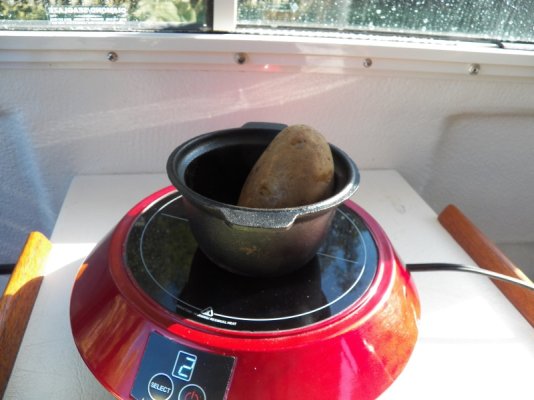- Joined
- Apr 15, 2008
- Messages
- 13,731
- Location
- California Delta
- Vessel Name
- FlyWright
- Vessel Make
- 1977 Marshall Californian 34 LRC
I guess my favorite would be my single induction hob. 800 watts and it can make a pot of coffee in about 4 minutes. The best cooking pot for it is an induction pressure cooker. Much faster than an InstaPot. I have an InstaPot at home, but too bulky and a little clunky for my boat. The induction hob with the pressure cooker can be monitored so that no steam escapes from the pot and no condensation like always happens with propane. When it is 25F outside, cooking dinner on propane means that you won't see out the windows until underway in the morning. Not a problem with a sealed pot and induction burner.
Got a link to see what you're using?


